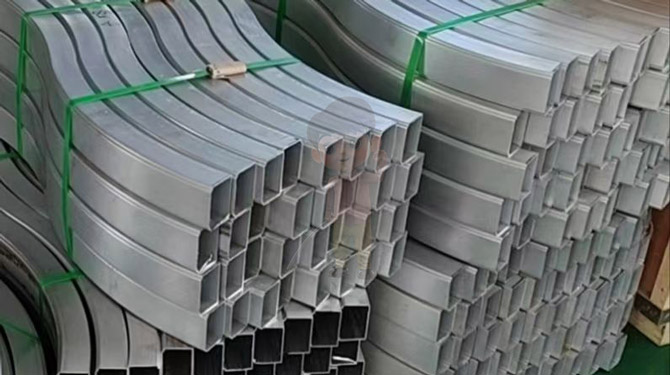The Future of Metal Bending: Trends and Technologies Shaping the Industry
Metal bending is a critical process in manufacturing that involves deforming metal sheets or sections to create specific shapes and components for a wide variety of applications. As industries evolve and technology advances, the future of metal bending is being shaped by numerous trends and innovations. This article explores these emerging trends and technologies that are set to redefine the landscape of metal bending in the coming years.
1. Automation and Robotics
One of the most significant trends in metal bending is the increasing integration of automation and robotics. Automated bending machines equipped with advanced robotics are improving efficiency and precision in the fabrication process. These systems can operate at high speeds, reducing cycle times and minimizing human error. By employing robotic arms, manufacturers can handle complex bending tasks that would be difficult or impossible for human operators. This shift not only enhances productivity but also allows for greater flexibility in manufacturing, enabling the production of customized components at scale.
2. Computer Numerical Control (CNC) Technology
CNC technology has revolutionized the metalworking industry, and its impact on metal bending is profound. CNC bending machines utilize computer software to control the bending process with high accuracy. This enables manufacturers to produce intricate designs and maintain tight tolerances, which are essential for modern engineering applications. The ability to easily modify programs also allows for rapid prototyping and adjustments, making it easier to respond to market demands. As CNC technology continues to advance, we can expect even more sophisticated capabilities, including real-time monitoring and adaptive control systems.
3. Advanced Materials
The development of advanced materials is another key factor shaping the future of metal bending. Innovations in alloys and composites enhance the performance characteristics of bent components. For example, lightweight materials such as aluminum and advanced high-strength steels (AHSS) are becoming increasingly popular in industries like automotive and aerospace. These materials offer improved strength-to-weight ratios, allowing for the design of more efficient structures. The ability to bend these advanced materials without compromising their properties is crucial, and manufacturers are investing in specialized equipment to accommodate this need.

4. Sustainable Practices
Sustainability is a growing concern across all industries, and metal bending is no exception. As environmental regulations tighten and consumer demand for sustainable products increases, manufacturers are adopting greener practices. This includes optimizing energy consumption in bending processes, reducing waste, and recycling scrap metal. Technologies such as laser cutting and water jet cutting, which complement bending processes, are also being utilized to minimize material waste. Furthermore, the development of eco-friendly lubricants and coolants for bending operations is gaining traction, contributing to a more sustainable manufacturing environment.
5. Industry 4.0 and the Internet of Things (IoT)
The rise of Industry 4.0 and the Internet of Things (IoT) is transforming the landscape of metal bending. Smart factories equipped with interconnected devices can monitor and analyze data in real-time, leading to more informed decision-making. IoT technologies enable predictive maintenance of bending machines, reducing downtime and improving overall efficiency. Additionally, data analytics can optimize production processes, allowing for continuous improvement and increased competitiveness. As manufacturers embrace these digital transformations, the integration of metal bending into smart manufacturing ecosystems will enhance overall productivity and innovation.
6. Virtual Reality (VR) and Augmented Reality (AR)
Virtual and augmented reality technologies are beginning to find their place in the metal bending industry. These tools can be used for training operators, allowing them to practice bending techniques in a safe, simulated environment before working with actual materials. AR applications can provide real-time guidance during the bending process, overlaying digital information onto physical components to ensure accuracy. As these technologies become more accessible, they will likely play a crucial role in workforce development and operational efficiency.
The future of metal bending is poised for significant transformation driven by automation, advanced technologies, and a focus on sustainability. As industries continue to demand greater efficiency, precision, and customization, the metal bending sector must adapt to these evolving needs. By embracing innovative materials, integrating smart technologies, and prioritizing sustainable practices, manufacturers can ensure that they remain competitive in a rapidly changing landscape. The ongoing advancements in metal bending technology not only promise to enhance manufacturing processes but also to contribute to the creation of more efficient and sustainable products for a better future.
04
2025-08
Number of visitors:1
HOT NEWS
-
Reducing the rebound error of car bumper bending enhances the stability of mass production.
2025-12-17
-
High-precision bending processing service: Automated bending process
2025-12-08
-
High-Accuracy Curve Forming: Achieving Consistent Bends in Aluminum, Steel, and Alloy Materials
2025-11-27
-
Advanced CNC Tube Bending Technology: Achieving Consistent and Reliable Precision in Complex Shapes
2025-11-17




 English
English Chinese
Chinese Japan
Japan German
German

 LIST
LIST
